The Walter Thornwell Inn on Manchester Road. tel Man-3523.


The Walter Thornwell Inn on Manchester Road. tel Man-3523.
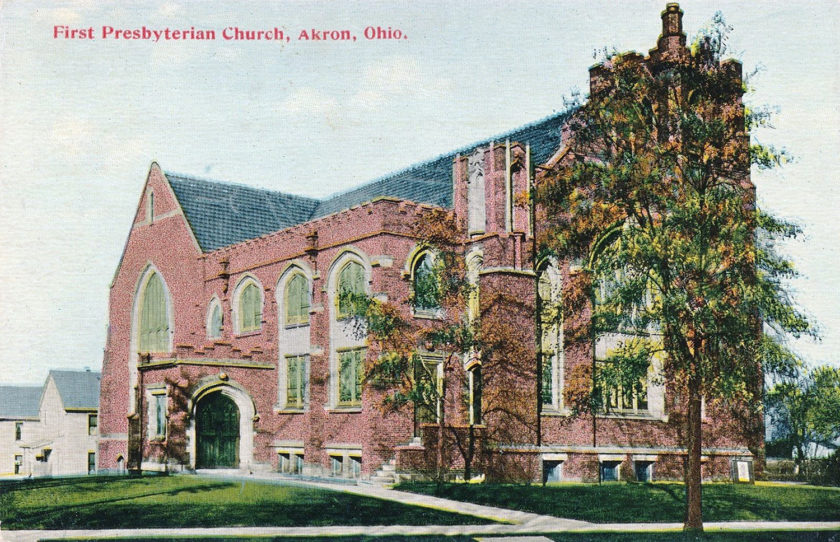

The Portage Path Canoe club was located at Lakeside Park on the shores of Summit Lake in Akron, Ohio.

Akron’s rapid population growth of the early 1900s put a strain on the city’s Union Station – built in 1891. Additions were made to enlarge the station, but they weren’t enough. In 1950 the building was replaced by a much larger and considerably more modern Union Depot.
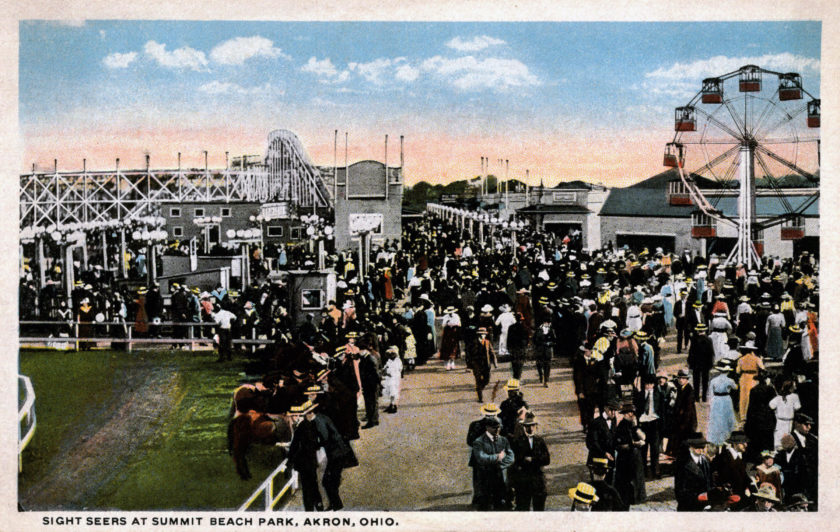
A crowded day of fun at Akron’s Summit Beach Park on the shores of Summit Lake. The park provided Akronites with 40 years of summer fun before closing the gates for good in 1958.
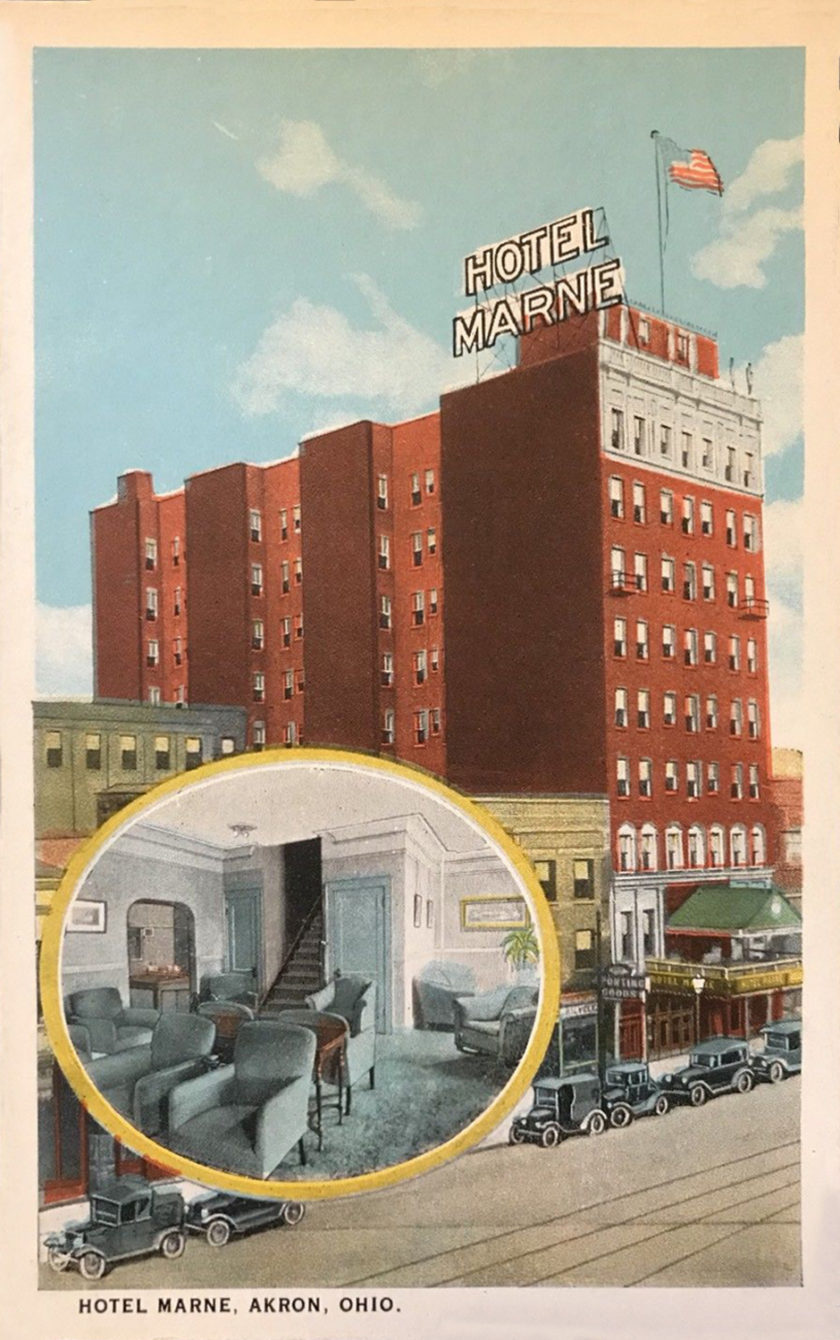
Owned by T.E. McShaffrey, Hotel Marne was located at 281 South Main Street. The 175-room hotel was opened on September 7, 1919 and managed by J.H. Bromley. The Marne was one of many new hotels to open in Akron in the early 1900s.
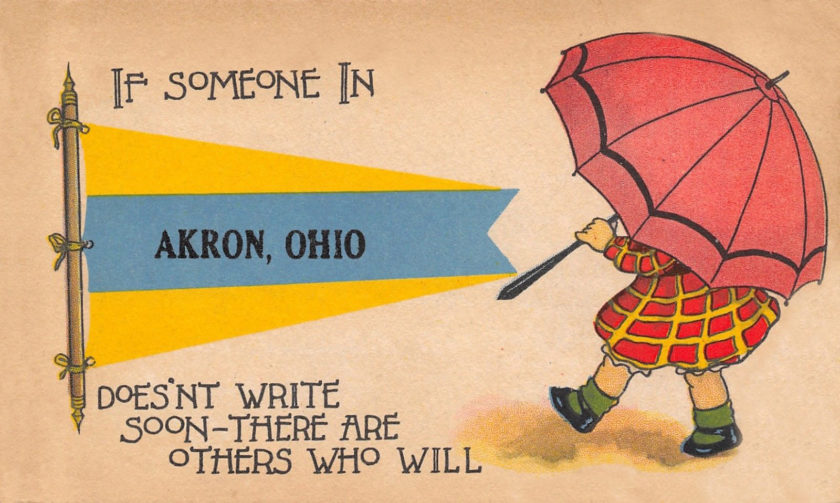
Akron became a manufacturing center primarily due to its location. The city was well connected to the canal system, and later to numerous major railroad lines.
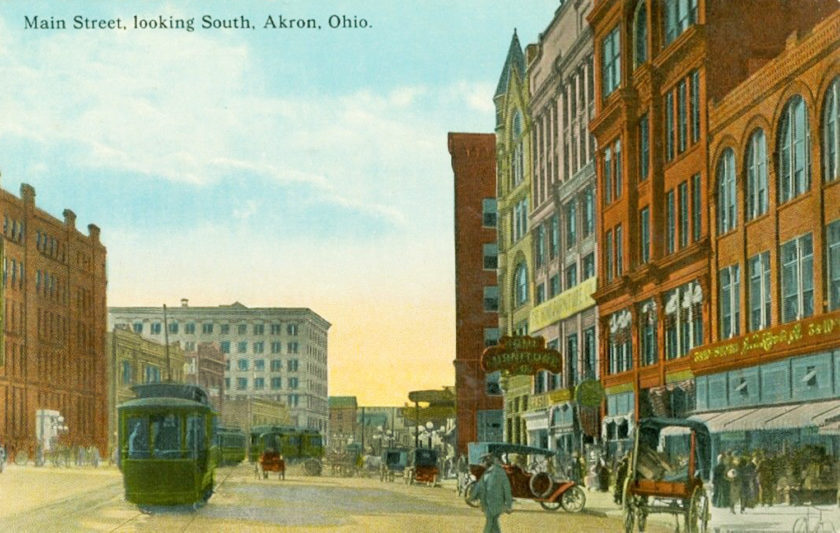
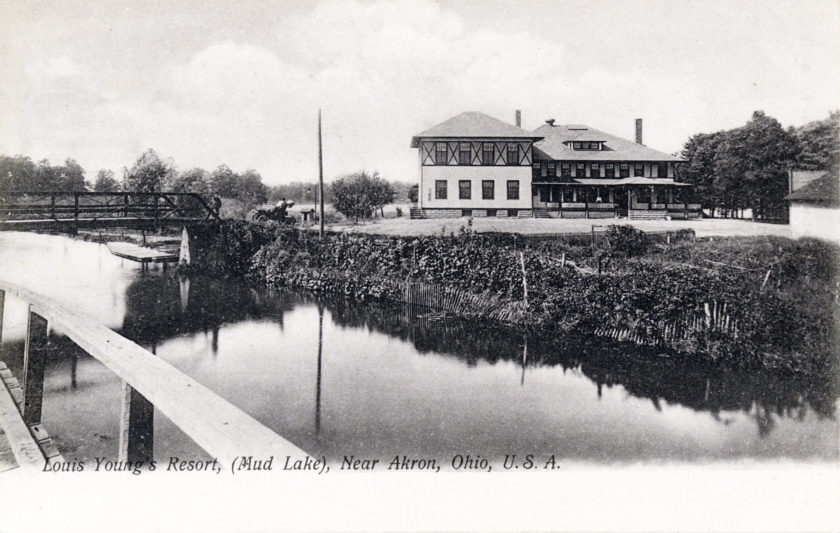

Built before the rubber boom, Akron’s Union Station quickly showed its inadequacies as the city’s population exploded. Although additions were made, the station was never large enough to handle the popularity of Akron. In 1950 a new Union Depot was built to replace the aging structure and by 1951 it had been demolished.
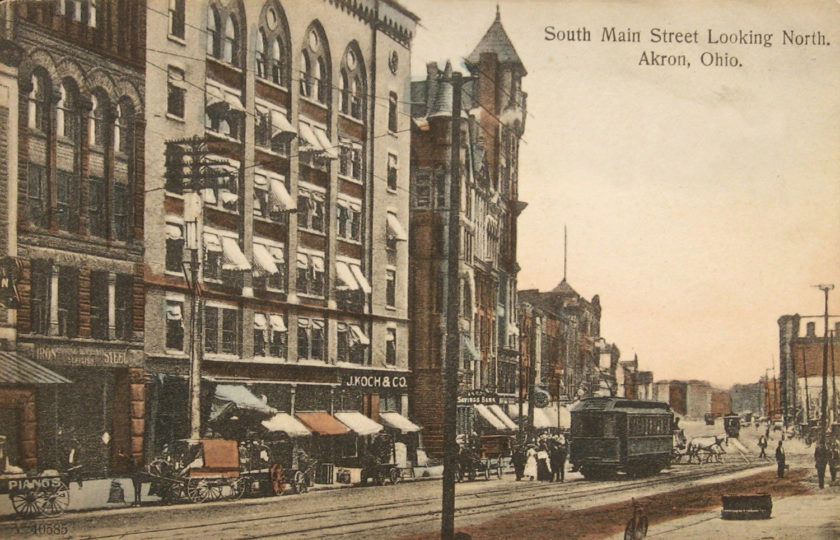
At a time before automobiles ruled the streets, most of Akron’s leading stores, theaters, and hotels were located along South Main Street. Trolley’s and horse carts added to the bustle of downtown.

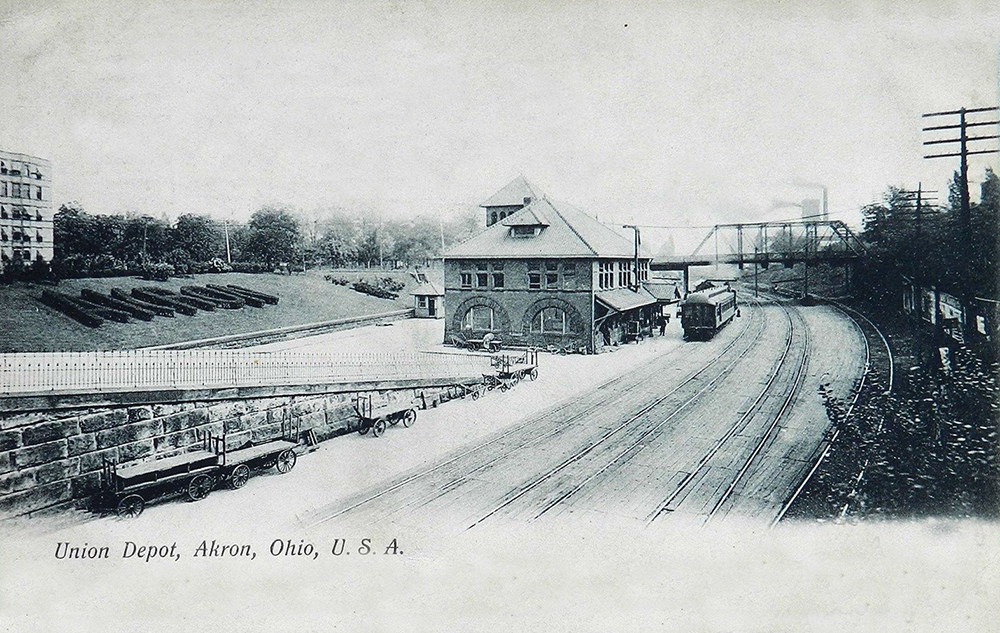
This was Akron’s second Union station. Although an attractive structure, Akronites didn’t have much love for this railroad station. Many complained about it being too small, too dirty, too hot in the summer, and too cold in the winter. Built in 1891, it was replaced and demolished in 1950.
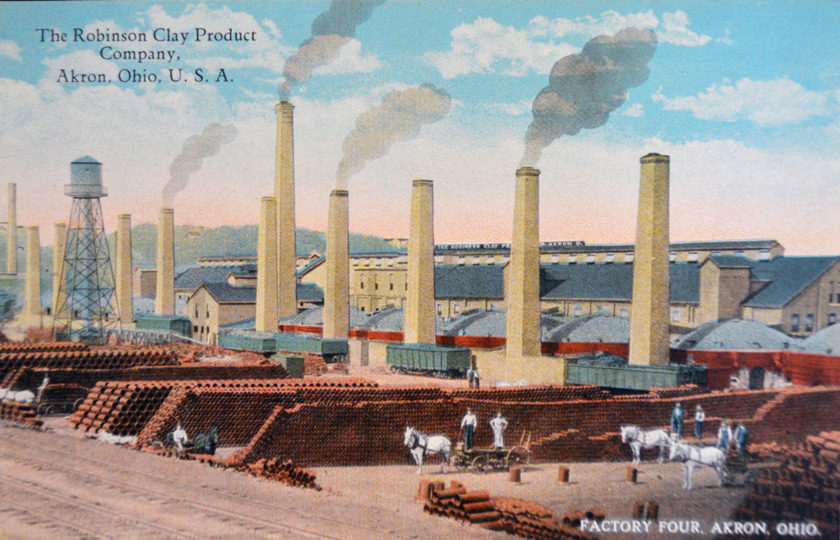
Founded in 1856 by Thomas Robinson, Richard Whitmore, and Thomas Johnson. Robinson Clay Products company manufactured sewer pipes, tile, brick, and many other clay products. Offices in the Second National Building

The Summit County Courthouse is located at 209 South High Street. The building, listed on the National Register of Historic Places, was designed by architect J. Milton Dyer. The seated figures of Justice and Law were created by Cleveland sculptor Herman Matzen.
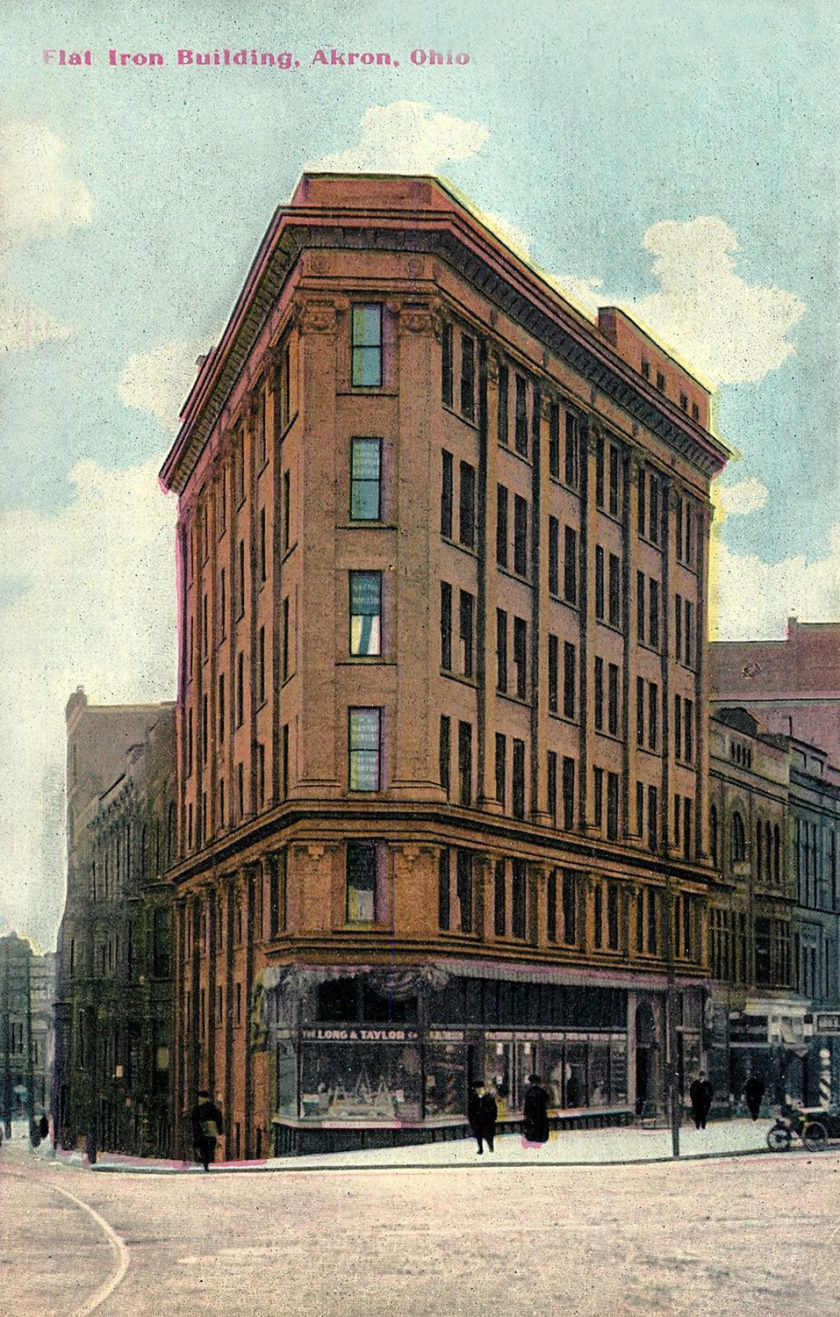
Akron’s Flatiron Building was located at Howard and Main Streets in downtown Akron. It was built in 1907 and demolished in 1967.

IN 1889, with just 13 employees, Goodyear production began. The product line included bicycle and carriage tires, horseshoe pads, and poker chips. By 1916, Goodyear had grown into the world’s largest tire company, and by 1926 it was the world’s largest rubber company.
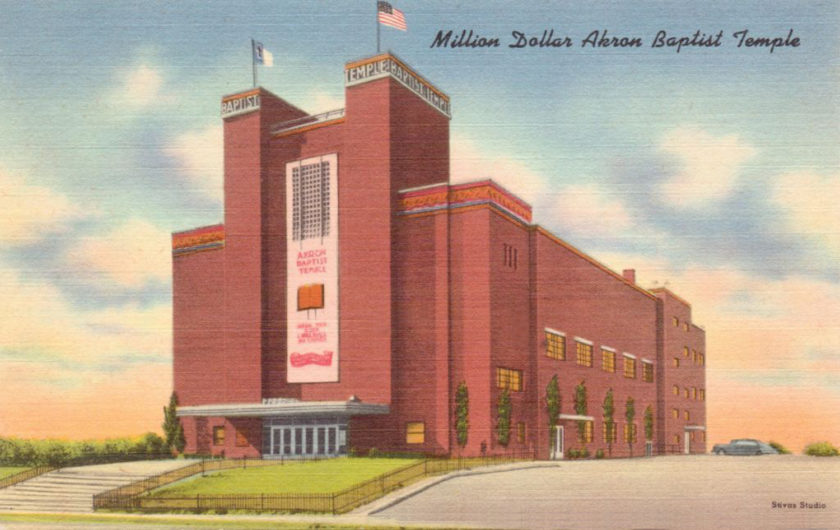
Million Dollar Akron Baptist Temple. 2314 Manchester Road in South Akron. This building is 200 feet long, 92 feet wide. Seating capacity in the auditorium of over 5000. Home of the largest Sunday School in the world, 5000 average attendance. Average Sunday offering of $5,600 for 52 Sundays. 250 voice choir. Church owns a fleet of…

Silver Lake Park had several log cabins, like the one shown here, as well as Swiss-style cottages. The park began in 1876 when Ralph H. Lodge built a small bathhouse and pavilion and provided boats for rental to fishermen. Soon the railroad was bringing excursions from places as far away as Columbus and Pittsburgh. At…

Following World War II, Akronites faced difficult financial times. The industries that allowed Akron to prosper during the 1800s and early 1900s began to decline. The economic downturn resulted in a declining population. In 1950, nearly 275,000 resided in the city. Fifty years later, the population had dropped to 217,000, and today it sits at 197,633.
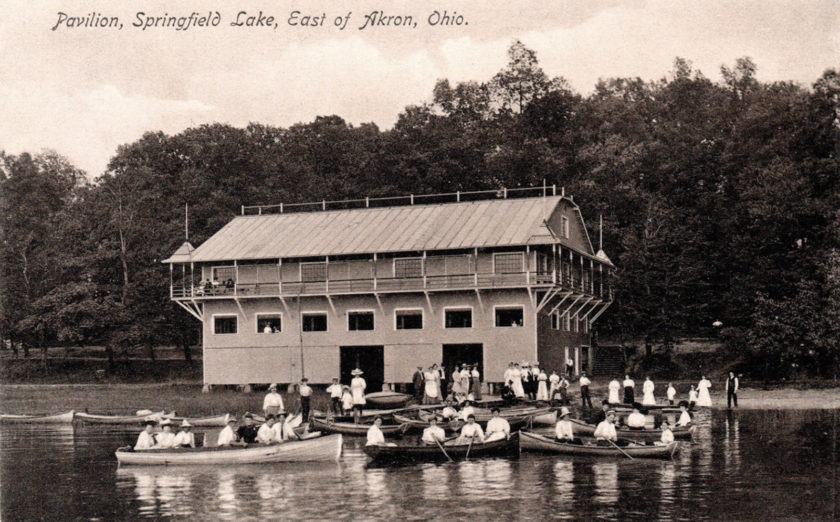
The Springfield Lake Pavilion was used for many social functions, including dancing on Saturday nights and Sunday afternoons. Patrons danced to the music of big name bands such as Guy Lombardo and Vaughn Monroe.
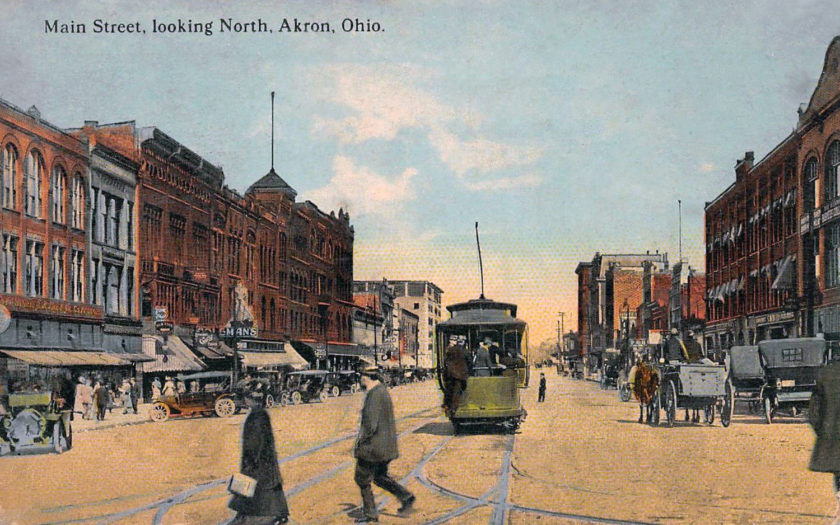
An early view of Akron’s Main Street complete with streetcar, horse cart and vintage automobiles.
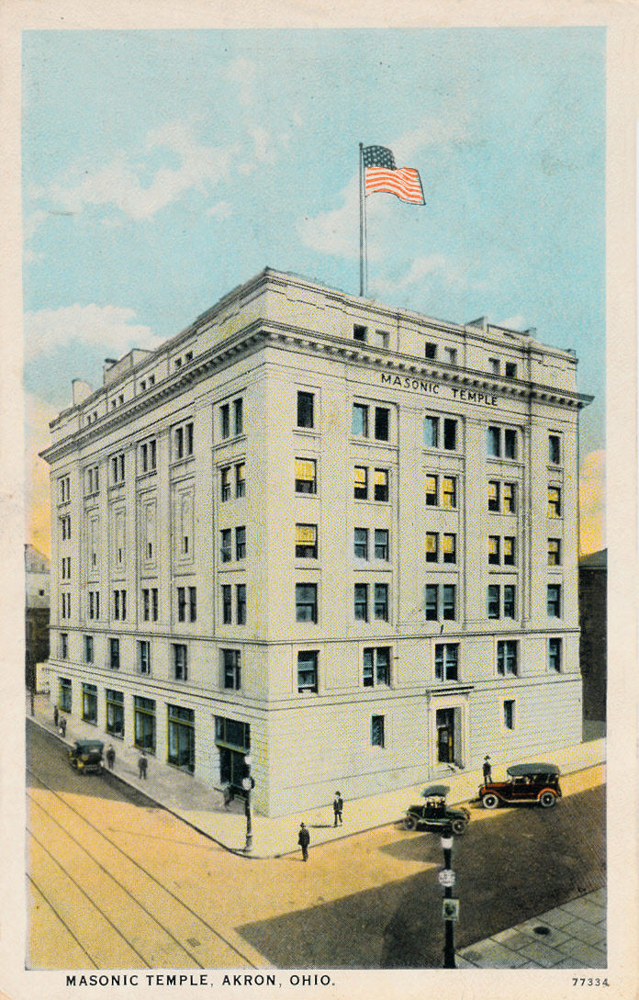
Built by the Freemasons in 1917 for their business and social gatherings. Following a sale in 1999, the building went through a two million dollar restoration project. Today the structure is used as a special events center.
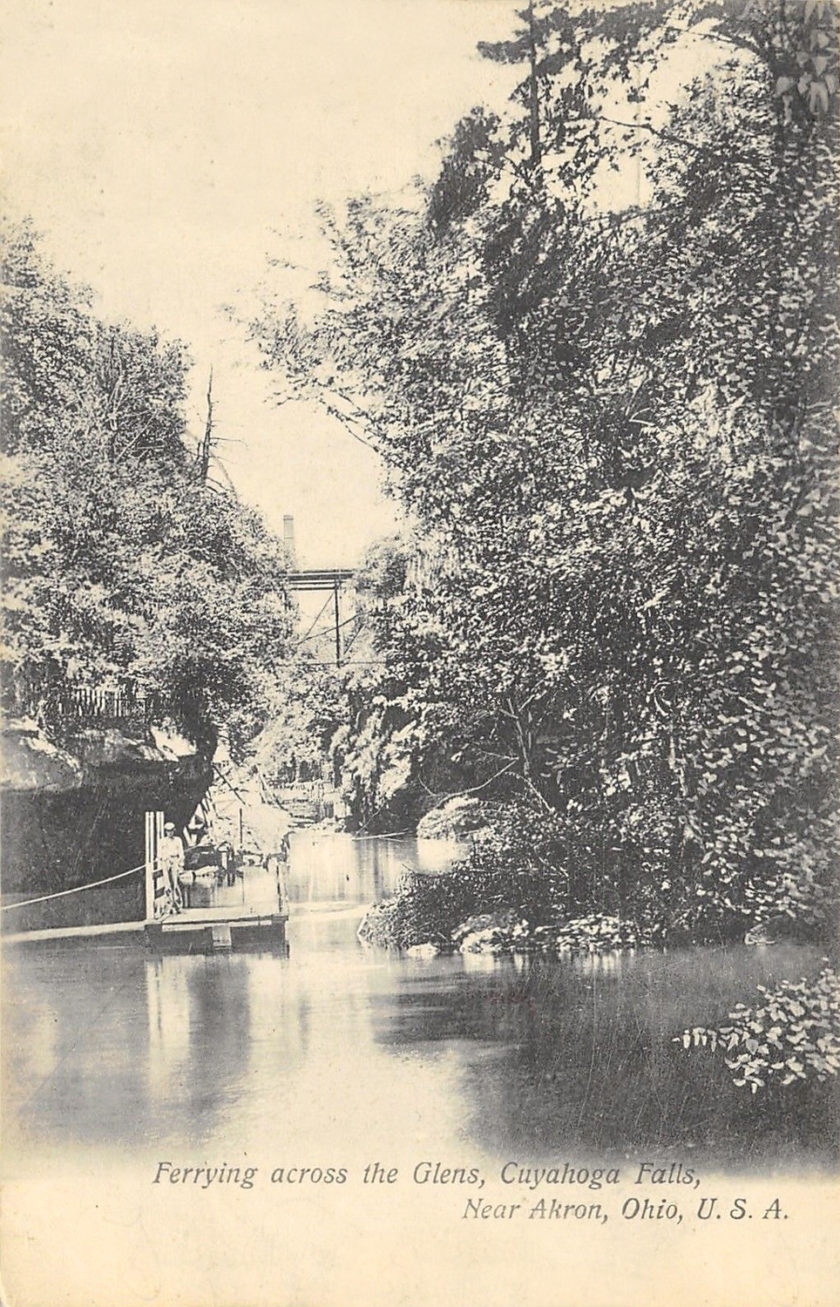
Carved from the earth nearly 12,000 years ago, the Gorge is one of the area’s greatest natural wonders. The area is also filled with amazing folklore. On May 21, 1758, at the age of ten, Campbell was abducted from a place in or near the town of Penn’s Creek, in Cumberland County, Pennsylvania. Her captors were a band…

Not even the streetcars are operating on this quiet morning along East Market Street.